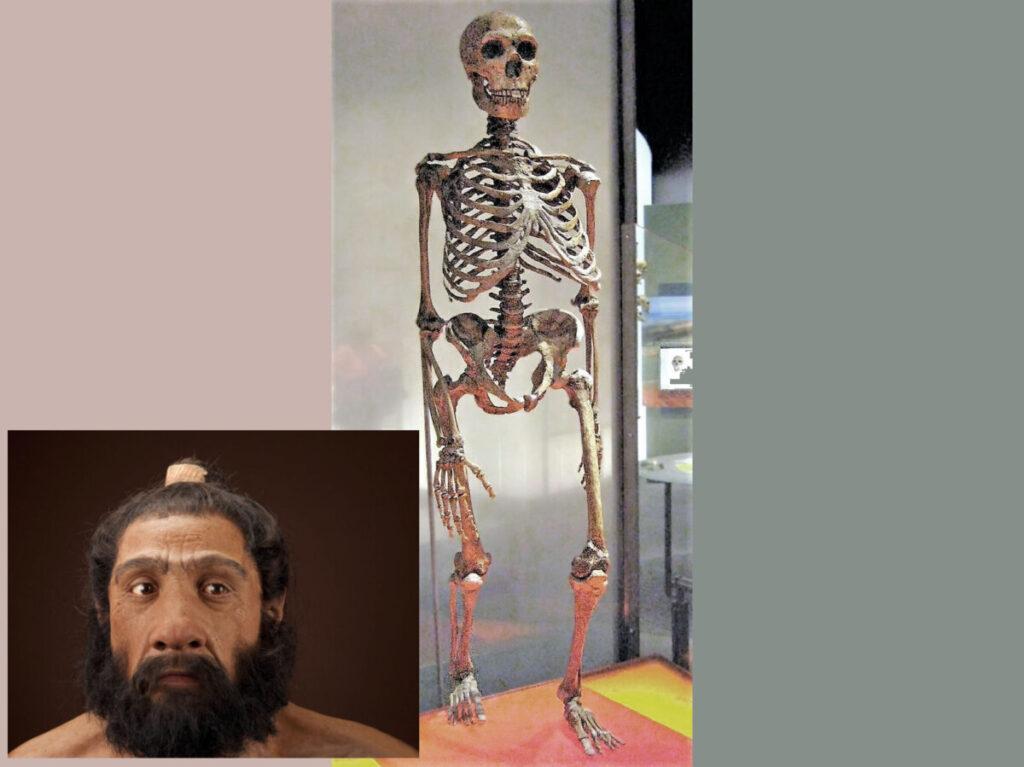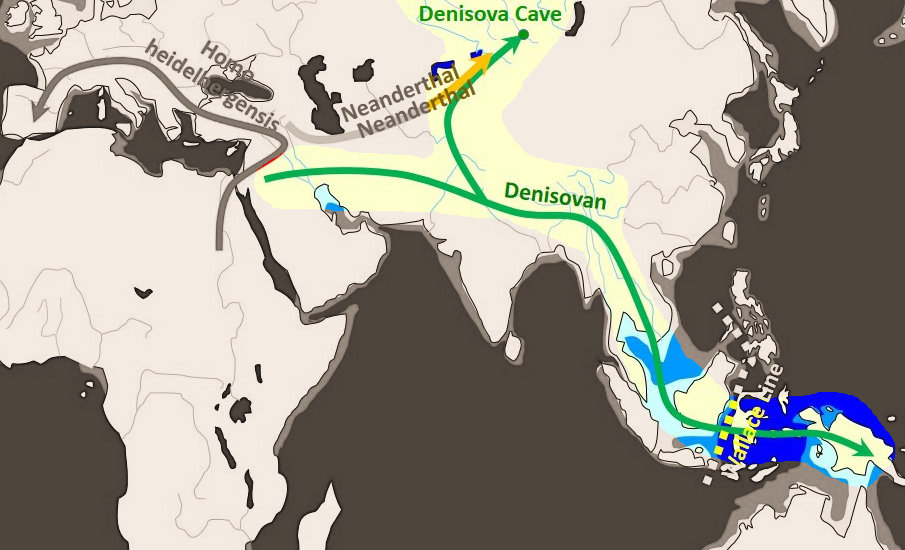Unveiling Gradualism: Beyond the Myth of a Leap.
In the annals of human history, the “Cognitive Revolution” is often hailed as a defining moment when we humans suddenly transcended the bounds of primal instinct to embrace complex thought, sophisticated language, and artistic expression. In this exploration, we’ll challenge that notion. This modern debate will resonate with anyone fascinated by the intertwining of science, philosophy, and history.
The magical event of the Cognitive Revolution is supposed to have occurred about 50 to 70 thousand years ago. This event marks the emergence of our “modern brains,” that’s the term we’ll use in this article to represent our current minds. It is characterized by the ability to engage in abstract reasoning, complex problem-solving, and enhanced communication skills—traits that epitomize our modern cognitive complexity.
In addition to “modern brains,” let’s simplify a few more terms to make this journey comfortable. Scientifically, all human species that are part of the genus “Homo” are referred to as Homos, hominins, or humans, but for the ancient species of this group, I’ll use the term “ancient humans.” If I’m referring to one of the three modern species from which we get most of our DNA, I’ll drop the genus “Homo” and use just their specific species name. I’ll refer to Homo neanderthalensis, Homo denisova, and Homo sapiens simply as neanderthal, denisovan, and sapiens (and I’ll do such in Chicago-style lowercase). For earlier species, I’ll keep the genus as in the following:
“Our current understanding is that our modern brains evolved slowly, but with significant bursts, over about 2.3 million years. Modern humans including sapiens evolved from Homo heidelbergensis, which evolved from Homo erectus, which evolved from Homo habilis.”
In recent years, the narrative that our modern brains evolved in a burst is compelling and widely accepted. Nonetheless I think it oversimplifies the rich tapestry of our cognitive evolution. This article, part of my New Ideas series, slows down this popular idea of a sudden leap, arguing that the evolution was more gradual.

Weekly Wisdom Builder
Got 4 minutes a week?
A new 4-minute thought-provoking session lands here every Sunday at 3PM, emailed on Mondays, and shared throughout the week.
Exactly what the world needs RIGHT NOW!
The focus of this discussion spans the last 2.3 million years, yet the traits comprising our modern brains, including long-term memory, self-awareness, and emotional intelligence, have roots reaching back as far as 375 million years. For instance, the development of long-term memory likely traces back to ancient times when fish like Tiktaalik first ventured onto land. Self-awareness could have taken shape before 18 million years ago with early apes such as Proconsul, while complex emotional intelligence, demonstrated by traits like empathy seen in orangutans, likely solidified over 12 million years ago. For a detailed visual exploration of the evolution of our modern brains, check out the March to Consciousness: The Soul Timeline.
Next let’s focus in on the capabilities of our modern brains, which is often described through concepts like symbolic thought, cultural transmission, and language. For this exploration, I employ the concept of Transcendental Intelligence (TI) from my Mindscape Framework, another component of my New Ideas series. In its simplest form, TI allows us to store information outside our bodies in the form of oral traditions, books, and libraries. It represents our capacity to rise intellectually beyond the immediate and tangible, engaging with abstract concepts such as art that tells a story, ritual, and symbolic communication that do not serve direct practical utility but enrich our collective intellectual and emotional lives. This form of intelligence underscores not just survival but the pursuit of deeper understanding and meaning—the traits the Cognitive Revolution attributes to a burst of evolution around 50,000 to 70,000 BCE.
Notice I wrote “art that tells a story,” above and not simply “art.” TI transcends simple art which does not tell a story and simple art is created by a few other species. As a drummer, my favorite example is the fact that Chimpanzees sometimes jam. A chimp may pick up two sticks and start jamming on a tree in what might be called proto-music. Others might even join in drumming and “vocalizing.” While their singing abilities are nothing compared to birds, dolphins, and whales, we can call it proto-singing. Yes, chimps kind of play music, or proto-music for fun and to relax not unlike humans today.
Non-human primates have been observed organizing rocks or pebbles in patterns too. Researchers have documented several instances of apes creating geometric patterns with rocks, sticks, and other objects. One notable example is the chimpanzee named Binti, who was observed creating a series of intricate rock patterns, including lines, squares, and even a spiral shape, at the Chimfunshi Wildlife Orphanage in Zambia. In“30 Philosophers,” the idea of pebbles in the sand is used several times to demonstrate pattern recognition and rational ideas. For example, in chapter 18, it is used to explain empirical observations and our rational ideas about them:
“While empirical entities exist physically around you, Rational Ideas are your indirect thoughts about those things. Take, for example, math and geometry: they provide frameworks to describe objects. Picture two rocks and two shells on a beach. You might recognize equivalence, a Rational Idea, between the two rocks and the two shells. If these items form a pattern resembling a square, the Rational Idea of square emerges. Similarly, if they form an L, an L-shape becomes relevant.”
The debate over the Cognitive Revolution between 50 to 70 thousand years ago, centers on the emergence of the last of our advanced traits. It further claims that earlier ancient humans did not have them and implies that neanderthals and denisovans didn’t either. However, emerging evidence suggests that these capabilities began to develop much earlier, perhaps even evolving over the last 2.3 million years. By examining this more continuous development of human cognitive abilities, this article shifts focus from dramatic turning points to a more nuanced appreciation of how our cognitive faculties likely evolved. In doing so, it challenges the abruptness traditionally associated with the cognitive revolution and highlights the depth and richness of cognitive development over time. It also implies ancient humans lived in a more intelligent world than is popularly portrayed.
This story of a more complex Earth, is also the story of our anthropomorphic bias. The story that implies modern thought is limited to sapiens and burst into existence. The story I’m proposing is a bit more nuanced. In both narratives, our self-awareness is so acute that we once envisioned ourselves at the center of the universe, with the Sun, stars, and planets revolving around us. The traditional version of our story portrayed apes confined to their lush niches, with humans venturing alone from the safety of forests to explore the world. Let’s call this impressive ability to venture beyond a safe home environment, adapt to diverse ecosystems and cope with environmental challenges, a “pioneering spirit.”
This “pioneering spirit” was likely driven by a combination of factors, including:
- Curiosity and exploratory nature,
- Adaptability and problem-solving skills,
- Ability to walk upright on two legs, freeing up hands for tool use and carrying food,
- Development of basic tools, such as stone tools, to aid in foraging and hunting,
- Social organization and cooperation, allowing for shared knowledge and resources.
While humans need clothes to survive in many places, what truly sets us apart is this adaptability, our “pioneering spirit.” Our knack for venturing well beyond our native turf is unmatched. We’ve been rocking this trait since the days of Homo habilis, about 2.3 million years ago. As the Bangles would put it, we’re born to “roam around the world.”
The truth is, evolution is almost always a slow process. Individual traits usually evolve slowly, and groups of traits always do. The group of traits distinguishing our modern brains from others most likely did not “burst” into existence, they likely evolved slowly over the last 2.3 million years.
This new version of our story is focused on our pioneering spirit mentioned. This story of the last 2.3 million years is teeming with pretty smart life, featuring ancient humans like the original Homo habilis, Homo erectus, and many others. This era millions of years ago consisted of pre-ancient human “hominid” species too.

Imagined Image: This depiction reflects recent findings that the modern appearance of Homo sapiens might have roots deeper in our evolutionary history than previously thought. From left to right: Australopithecus afarensis from about 3 million years ago, Homo habilis from about 1.5 million years ago, showcasing early human traits; Homo erectus from about 1.2 million years ago, illustrating an intermediate form; Homo antecessor from about 1 million years ago, and Homo heidelbergensis from about 300,000 years ago. On theory suggests our modern looks might be a mix of these species.
In reality, early human-like hominids and ancient humans alike demonstrated a pioneering spirit. From these early species to modern humans, our ancestors expanded their ecological niches, occupying various habitats and developing new technologies and social structures to thrive in these environments. This capacity for adaptability and resilience has been a hallmark of the human journey, with different species and groups within species exploring and settling new territories, from the savannas and deserts to the mountains and coastlines.

These species stepped out of their comfort zones and occupied diverse niches simultaneously. While there were undoubtedly bursts of progress toward our modern brains, this 2.3-million-year saga is bustling with life, illustrating a diverse and dynamic tableau of evolutionary paths that have shaped our journey toward our modern brains. If you’d like to reset your mind before diving deeper into these details, consider exploring A New Look at Ancient Hominin Numbers: A Speculative Journey, a visual and descriptive tour of hominin populations over the last 700,000 years.
Baseline Intelligence: Tracing the Depth of Our Cognitive Heritage
Before we delve into the origins of our modern brains, let’s establish a “for sure” baseline for how long we’ve had our modern brains. To do this, we need to address two critical questions: Do all modern human groups possess the same cognitive abilities? And which human group was isolated the earliest? Both questions have straightforward answers.
Yes, all human groups exhibit equivalent cognitive abilities, reflecting our shared biological heritage. And yes, we’ve made significant progress identifying the migration of sapiens over the last 120,000 years.
The migration to the Americas around 25,000 to 15,000 BCE via the Bering Land Bridge illustrates our cognitive adaptability and innovation in facing new environmental challenges. So we can safely push our modern brain back to about 25,000 BCE.
Aboriginal Australians represent one of the earliest examples of a human group becoming geographically isolated, dating back to at least 50,000 BCE. This significant isolation makes Aboriginal Australians pivotal in tracing the timeline of when our modern brains were firmly established. Their successful navigation to and settlement of Australia, often requiring complex island-hopping, underscores the presence of advanced understanding and planning skills.
This evidence allows us to confidently extend the timeline of our modern brains to at least 50,000 BCE, coinciding with the migration of Aboriginal Australians to Australia. With the broader wave of human migrations out of Africa, logic dictates we can push this timeline back to around 70,000 BCE. This assessment adheres to the traditional narrative of the Cognitive Revolution but introduces a crucial distinction: we are not suggesting that our modern brains suddenly evolved during this period. Rather, they were either already well-established, or it was during this time that they received their last little bit of juice. In other words, humans from 100,000 years ago were only slightly less cognitively developed than those from 50,000 years ago, indicating that while there were indeed bursts of rapid development, the overall process was gradual.
Tracing Our Genetic Roots: The Stories of Adam and Eve
Understanding our genetic lineages offers more than just a look back at our ancestry; it raises intriguing questions about the development and distribution of cognitive traits across different human populations. While cognitive abilities are influenced by a complex interplay of genetics, environment, and culture, the genetic continuity provided by Adam and Eve suggests that foundational cognitive capacities likely existed well before these ancestors.
All living humans trace their heritage to “Mitochondrial Eve,” our universal maternal ancestor, who lived around 175,000 years ago in Eastern Africa. All living humans share her mitochondrial DNA, which is passed down from mothers to their children, making her the most recent common matrilineal ancestor. Eve’s existence, defined by Haplogroup L, underscores a pattern of genetic convergence seen in our maternal lineage. While this DNA evidence does not push the firming of our modern brains back, it is compelling evidence of the gradual process of evolution.
Parallel to the story of Eve, our paternal lineage traces back to a single man, commonly referred to as “Y-chromosomal Adam,” who lived around 275,000 years ago in Eastern Africa. This ancestral figure is not the first or only man of his time but represents the most recent common ancestor from whom all current human Y-chromosome haplogroups derive. His genetic legacy, categorized under Haplogroup A, marks a crucial node in our species’ genetic map. Over countless millennia, numerous paternal lineages emerged and perished; however, it is from Adam’s lineage that all present-day human Y-chromosomes descend. This profound bottleneck in our paternal lineage highlights the intricate patterns of survival and transmission that characterize our genetic history. Again, while this does not indicate a modern brain, it does indicate a gradual process.
Can we push back further? Sure, the case starts to get fuzzy, but let’s explore. This part of the story is less definitive but still compelling. However, before we explore deeper, let’s address the burst of evolution clouding our current view.
The Cognitive Revolution: A New Look
The traditional narrative of the Cognitive Revolution paints a picture of a pivotal era, roughly between 50 to 70 thousand years ago, when sapiens purportedly underwent a dramatic transformation in cognitive capabilities. This period is often portrayed as a kind of “Great Leap Forward,” a term coined by paleoanthropologist Richard Klein, born 1941, suggesting that it was during these millennia that modern humans suddenly distinguished themselves from their ancestors through an unprecedented surge in intellectual and cultural complexity.
Key Elements of the Revolution
Sophisticated Tool Use: One of the hallmarks of this revolutionary period was the emergence of more sophisticated tools. Unlike the relatively simpler and more utilitarian stone tools of earlier ancient humans, the tools from this period exhibited refined craftsmanship and specialization. The development of blades, engraving tools, and composite tools, which combined multiple materials, reflects a significant leap in technological understanding and application. These advancements not only improved hunting and gathering efficiencies but also enabled new interactions with the environment and other species.

Language development is another cornerstone of the traditional Cognitive Revolution narrative. The ability to communicate complex ideas, emotions, and instructions through sophisticated spoken language is seen as a key differentiator of sapiens. This development is often associated with significant changes in the brain’s structure and function, particularly in regions involved in speech and auditory processing. The evolution of language is believed to have facilitated more complex social structures and collaborations, underpinning the development of larger and more interconnected communities.
Artistic expression, perhaps the most visually and emotionally compelling evidence of a cognitive leap is found in the art from this period. The appearance of cave paintings, carvings, and other forms of artistic expression indicates not only a technical ability but also a profound depth of cognitive and emotional experience. These artworks are often interpreted as expressions of self-awareness, social identity, and even spirituality. The creation and appreciation of art suggest a complex understanding of the world, one that encompasses abstract and symbolic thinking.
These elements collectively underpin the traditional view of the Cognitive Revolution, framing it as a distinct and defining epoch in human history. This version of our story has shaped much of our understanding of human evolution, emphasizing a sudden enhancement in cognitive capabilities that purportedly set sapiens apart from all other forms of life on earth.
Challenges to the Traditional View
While the traditional view of the Cognitive Revolution has dominated our understanding of human history over the last few decades, recent archaeological and anthropological findings challenge the notion of a sudden cognitive leap. These studies suggest that the roots of complex cognitive behaviors extend much further back in time than previously thought and that these capabilities were not exclusive to sapiens.
Archaeological Evidence of Earlier Complex Behaviors
Archaeological discoveries across various sites have presented compelling evidence of complex behaviors long before the traditional timeline. For instance, tools and artifacts dated to over 100,000 years ago show signs of advanced design and use, including the controlled use of fire going back to Homo habilis and perhaps as far back as 2 million years ago. The construction of complex hunting weapons goes far back too. Simple spears have been used for over 5 million years. For example, chimpanzees in Senegal today have been observed using spears to hunt and kill bushbabies. They fashion tree branches into spears, sharpening the ends by gnawing on them, and then use them to stab and injure their prey. Sophisticated spears carved, weighted, and shaped like modern javelins go back before sapiens to at least 400,000 years. Such findings imply a sophisticated understanding of materials and technology that rivals the developments traditionally attributed to the later period.
Moreover, symbolic artifacts, such as ochre with engraved patterns from Blombos Cave in South Africa, might date back to 140,000 years ago, challenging the idea that symbolic thought emerged only during the Cognitive Revolution. These artifacts indicate that early sapiens were capable of abstract thinking and symbolic communication well before the timeline suggested by the traditional view.
Cognitive Abilities of Neanderthals and Other Ancient Humans
The reassessment of neanderthals has been particularly significant in reshaping our understanding of the evolution of our modern brains. Neanderthals evolved before sapiens, likely more than 100,000 years before us. Long portrayed as brutish and primitive, recent studies have revealed that neanderthals engaged in behaviors that are indicative of high cognitive functions. Evidence of burial practices, the use of medicinal plants, and the creation of cave paintings by neanderthals suggests a sophisticated level of cultural and possibly spiritual life.
Moreover, the discovery of interbreeding between neanderthals and sapiens indicates that the cognitive differences between these groups were perhaps not as pronounced as once thought. This genetic exchange has implications for our understanding of the cognitive abilities shared across early hominins, suggesting a more nuanced evolutionary landscape.
It’s even possible that neanderthals are the real brains in human evolution and our modern brains are a composite of several interbred species forging a new hybrid. For example, a scenario under consideration is that early interbreeding between ancient humans may have enhanced sapiens’ cognitive abilities. Either way, for sure that was followed by later interbreeding with neanderthals and denisovans, whose genetic contributions were partially incorporated into several populations of already hybridized sapiens.
Exploring the Deep Roots of Sapiens
The fossil record indicates that the first significant wave of sapiens migrating out of Africa was to the Middle East between 120,000 and 90,000 years ago, with some of the earliest evidence of our presence outside Africa found in regions like Israel and Saudi Arabia. However, the fossil record also puts other ancient humans in Eastern Europe and Western Asia 1.8 million years ago.
As we journey through time, we are definitely in the era before the firming up of our modern brains. During this era, we encounter a landscape rich in evolutionary history and migration. We sapiens emerged around 315,000 years ago from what is believed to be a common ancestor with neanderthals and denisovans: Homo heidelbergensis. By the time sapiens branched off, the foundational traits that largely characterize the core of our modern brains were likely established.
Neanderthals and denisovans had a common ancestor perhaps about 370,000 years ago (current estimates range from 250,000 to 500,000 years ago). Though neanderthals, denisovans, and sapiens share a common ancestor, they didn’t evolve directly from each other. That common ancestor from which all three evolved from was likely a later Homo heidelbergensis circa 450,000 years ago. Although some research suggest denisovans branched from an early species. If denisovans branched from an earlier Homo heidelbergensis, it suggests modern cognitive abilities like symbolic thought may have emerged much earlier than previously believed, which aligns with discoveries of early art currently under investigation. Some suggest denisovans branched from Homo erectus, if that’s true but I don’t think it is, that pushes the evolution of a large portion of our modern brains back to about 1 million years ago. Either way, it’s clear our current anthropomorphic bias has painted a cloudy picture. It’s much more likely that many of these species were roaming around with similar cognitive abilities. Occam’s Razor suggests simple explanations are better. Using that logic, it’s more likely that all these species evolved from a single species rather than them all independently evolving “intelligence” in such a short time.
Long after the three species were on Earth, they interbred from time to time. Through DNA testing we can identify DNA that came from interbreeding with both. The highest percent of denisovan DNA in modern humans is in Melanesian populations; it ranges from 4 to 6 percent, lower in other Southeast Asian and Pacific Islander populations, and nearly undetectable elsewhere in the world.
Denisovans became extinct about 40,000 BCE, the last surviving in Siberia. They built shelters, wore clothes, used tools, and spoke. The hyoid bone, which is tied to the evolution of speech, or speech-like noises, likely evolved long before this in early Homo heidelbergensis, or perhaps even in very late Homo erectus. Later Homo heidelbergensis, neanderthals, denisovans, and sapiens all likely looked very similar: not unlike a combination of the wide variety of looks seen in modern humans.
The bottom line of all this is that our cognitive ability, the modern brains unique to humans, has been evolving and unfolding over the last 2.3 million years. Can we have faith in this conclusion? Absolutely. Historical and archaeological records, supported by logical analysis indicate our cognitive abilities were largely established by the time of these significant migrations. This perspective not only supports but also expands the traditional view of the Cognitive Revolution by focusing on when these abilities were demonstrably present, rather than speculating on finding a specific period when the “modern brain” burst into existence.
Evaluating Ancient Human Intelligence
We have clear evidence that ancient human feet were well established before Homo habilis by millions of years. Bipedalism, dental changes, cranial capacity, upright posture, hand anatomy, pelvic shape, tool use, reduction of body hair, and changes in limb proportions all diverged after our split with chimpanzees and before Homo habilis. These traits collectively represent a shift from an ape-like ancestor towards characteristics that are more recognizably human. Homo habilis lived in a variety of habitats, indicating their pioneering spirit was very strong, a telltale sign of intelligence. This adaptability is a sign of behavioral flexibility and problem-solving capabilities that point to key ancient human cognitive evolution.

With the gradual evolution of our most “human” of cognitive traits established, let’s hop on the other side of the temporal journey. Let’s go back to the great apes and explore our closest cousin, the modern chimpanzee. When comparing the modern chimp brain to our modern brains, we can more clearly see what happened.
Today, chimpanzees are known to be pretty smart with a bit of a pioneering spirit. They possess exceptional intelligence, demonstrating advanced problem-solving skills, complex social behaviors, and remarkable linguistic abilities. Chimpanzees have demonstrated the ability to learn and utilize over 200 sign language words. While chimpanzees are more intelligent than gorillas, remarkably, Koko the gorilla learned over 1,000 signs. This demonstrates cognitive range within species just like in human populations. Also, the pioneering spirit of chimpanzees, while not as evolved as ancient humans, is still more evolved than earlier primates, like the gorilla. While they don’t roam the Earth like ancient humans, they can adapt a bit to changing environments. Their cognitive abilities demonstrate impressive similarities with those of humans, particularly in areas like problem-solving, memory, and language comprehension, significantly expanding our understanding of animal cognition and highlighting the evolutionary continuity between human and non-human primate intelligence.
Here’s an interesting thought. Chimps are smart with a little pioneering spirt, but nowhere near Homo habilis smart 2.3 million years ago. Let’s do a quick physical comparison of the evidence. Modern chimps are about the same size as Homo habilis, but their average “height” is a bit shorter, both ranging from 3’ to 4’5”. While they were about the same size, the Homo habilis brain was on average 43% larger and 55% smarter.
How do we know Homo habilis was 55% smarter than the modern chimpanzee? Well, we don’t and assigning specific numbers is a bit silly. However, it is an educated guess based on the size of their brains and brain-to-body ratio. The next few sentences are a bit technical but needed to drive home my analysis and conclusions. Modern chimpanzee brains average 387 cm³, that’s a median of their range from 273 to 500 cm³. The brain of Homo habilis averaged 43% larger at 555 cm³, the median between their range from 510 to 600 cm³. However, Homo habilis was more than 43% smarter because of their EQ measurement. The Encephalization Quotient (EQ) is a measure of the ratio of brain mass to body mass, indicating the relative size of an animal’s brain compared to its body. A higher EQ indicates a larger brain relative to body size, associated with greater intelligence, cognitive abilities, and complex behaviors. Modern chimpanzees have an EQ average of 2.35, while Homo habilis has an average EQ 55% higher at 3.65.
Now, to make this a bit more relatable, we can estimate the average IQ of both modern chimpanzees and Homo habilis. While this is a speculative approach, it helps with framing a general picture. The Intelligence Quotient (IQ) system assigns 100 to the average intelligence for any population at any time. By definition, 100 is average intelligence for modern humans. Now, giving an actual IQ test to chimps or Homo habilis is silly. They would both score 0 because the test is highly skewed for humans living at a particular time and in a particular culture. However, in comparative anthropology and cognitive archaeology we can use the EQ system to estimate a rough order of magnitude. This is a valid rational idea because all three are on the same scale. So, using it for ballpark estimating, chimps have an IQ of about 35, and Homo habilis had an IQ of about 55.
To determine their average IQ, we used their average EQ: chimpanzees at 2.35, Homo habilis at 3.65, and sapiens at 7.6. For sapiens, Albert Einstein likely had an IQ of between 160 and 180. The smartest humans ever fall in the range of 250 to 300. So, that begs the question, of chimps and Homo habilis, what was the likely range of the smartest of them to have ever lived? That’s hard to estimate, but assuming a similar distribution of intelligence within their populations, it’s possible and realistic that a few chimps that have walked the Earth had an IQ into the 60s and 70s. Although also speculative, it’s equally likely that a few Homo habilis over their one million years of existence had an IQ above 80, perhaps as high as about 110 toward the end as their brains grew in size. That makes the smartest Homo habilis a bit smarter than the average human today. That doesn’t mean they could speak, write, and sculpt. The EQ is an estimate of “raw intelligence.” Environment plays just as big a role. It does beg the exploration of a thought experiment. What if you took the top 10 smartest Homo habilis and raised them in a modern environment, would their potential intellect be realized? We won’t attempt to answer that here. We’ll save that wonderful thought experiment for another day.
Now, take a moment and imagine what all this means. Imagine a bunch of super smart chimpanzee-like species with an advanced pioneering spirit roaming the Earth. Well, actually, mainly places they could walk to from Africa like the Middle East, Europe, the Mediterranean, and Asia. All were evolving grunt-like speech abilities with their evolving Hyoid bone and other subtle evolutionary changes. These various ancient human species evolved over the last 2.3 million years. All perished except for sapiens. According to the logic of Occam’s Razor, that’s the most likely world our ancestors evolved in.
What does this imply? To me this implies that our modern brains started to forge before the chimp-human split. That puts some of our core cognitive abilities back to about 7 million years ago, and my guess is that the first human cognitive revolution occurred about 2.3 million years ago with Homo habilis. Notice the switch to lowercase for “cognitive revolution” because I’m referring to a different one. One that focuses on overall “primate intelligence.” Our modern brains, our last Cognitive Revolution, our last little bit of brain juice likely evolved sometime between 150 and 50 thousand years ago. I’m also suggesting that the majority of research leans closer to 150,000 years ago and to the idea that it was “little.” It was not a “revolution,” just a series of incremental steps.
Shared Heritage: The Last of the Humans
This deep historical context sets the stage for understanding how the foundations of what makes us uniquely human were laid down well before our ancestors stepped out of Africa. Long before we started interacting, and competing for resources, with other ancient humans. It also hints at the vast stretches of prehistory during which our cognitive and physical traits were honed through countless generations, long before the well-studied epochs that are often highlighted in discussions of human evolution.
While no one would claim our modern brains evolved to our current level before 440,000 years ago, for sure they were pretty good by then. We know the cognitive abilities of neanderthals and denisovans was pretty comparable to our modern brains. This is supported by various neanderthal and denisovan findings. We have evidence they created art and jewelry with modern-like drill holes. We found a denisovan bracelet that dates from 70,000 to 40,000 BCE in Siberia, Russia. The cave paintings in Spain by neanderthals date to the same time period. Finally, neanderthals had significantly larger brains than us, a higher EQ, a likely indication of overall cognitive ability. These findings indicate symbolic thought including advanced tool creation likely evolved in our common ancestor before 440,000 years ago.
A Strand of DNA Evidence
Modern sapiens and neanderthals share approximately 99.7% of their DNA, reflecting their close evolutionary relationship. This high degree of similarity is due to their recent common ancestry and interbreeding that occurred between the two groups as they encountered each other in Europe and Asia.
We share about 99.7% of our DNA with neanderthals, which is remarkably close. To put this in perspective, modern human populations across different regions also show genetic similarities, typically sharing about 99.9% of their DNA with each other. This high level of genetic similarity across all modern sapiens underscores just how closely related we are to neanderthals, highlighting why interbreeding between our species was possible.
Gradual Development Across Ancient Humans
Now, I think we’ve firmly established that our modern cognitive abilities evolved gradually over the last 400,000 years. Now it’s time to put forth more evidence demonstrating it might have evolved even more slowly over the last 1 to 2 million years.
Ancient human species, such as Homo erectus and Homo heidelbergensis, also display evidence of advanced cognitive abilities that might be more powerful than recently portrayed: complete with symbolic thought. Their art, and even their behaviors bridge the gap between early human ancestors and modern sapiens. For example, the use of fire and construction of long-lasting habitations by Homo erectus demonstrate foresight, planning, and social cooperation, all indicators of complex cognitive capacities.
Adding to this narrative of cognitive sophistication is the discovery of the Bhimbetka petroglyphs in central India. These cupules—circular hollows on rock surfaces—date back to before 290,000 BCE, and potentially as old as 700,000 years. This makes them among the earliest known forms of rock art worldwide. The creation of these cupules, which required deliberate and methodical rock carving, indicates not only the presence of artistic intent but also suggests an understanding of symbolic representation and aesthetic expression very early in human history.
These findings collectively suggest that the development of cognitive abilities in hominins was not a sudden event but rather a gradual accumulation over hundreds of thousands of years. This gradualist perspective challenges the sharp delineation posited by the Cognitive Revolution.
She’s got the looks!
Now let’s get superficial and talk about the looks of ancient humans. For too long, our perception of early human species has been clouded by a lens of anthropomorphism. Our desire to claim “we are special” too frequently clouds our analysis. We’ve often envisioned them as brutish “cavemen” vastly different from ourselves. However, recent advancements in paleoanthropology and a critical reevaluation of the fossil record challenge this simplistic view.
Most research has modern human looks evolving in Homo sapiens starting about 300,000 years ago. So, it was quite a shock to these anthropomorphic biased scholars when they learned in the last decade that Homo sapiens interbred with both neanderthals and denisovans. However, the bottom line is that the looks of ancient humans is still under research.

It’s true that current analysis tends to tie our modern looks with the rise of Homo sapiens starting 315,000 years ago, but I think that is a mistake. We now know we interbred with neanderthals and denisovans so that might push aspects of our looks back to at least 440,000 years ago. While a timeline is currently difficult to create, my best guess as an open minded observer, is that current evidence suggests the modern human look likely started to emerge within the last 1 to 2 million years. This timeframe coincides with the rise of early human ancestors who faced diverse environments and potentially benefited from the functional advantages of our modern nose, for example. Our nose, a more projecting nose, helps in colder, high-moisture environments. But the reality is that our nose, with its range of shapes (long, thin, wide), might have evolved anytime over the last million years. Some of our facial features might even be a feature of sexual selection over time and perhaps even fluctuated. Beyond this, I see no current way to determine what covered the fossils we find. I do tend to lean toward showing Homo habilis as more chimpanzee like, and Homo erectus as more modern human like. These biases of mind show up in the images I generate.
Now, before I show you more pictures of ancient humans, let’s reset our palette. Forget about models with average features and perfect symmetry; consider the vast array of shapes and looks you’ve personally encountered. Picture skin tones ranging from very dark to very light, and hair that might be thick, thin, straight, curly, or tightly coiled. Imagine noses that are protruding or button-like, flat or thin, some with a ridge closer to the eyes. While most people don’t, some have a receding chin reminiscent of Neanderthals. Our heads might be rounded or elongated; our faces flat or slightly protruding like those of our primate ancestors. And though large foreheads are common, some individuals feature a sloping forehead, a protruding face, and a receding chin—traits echoing our distant lineage. All these features are human, each one stunning in its diversity. Beauty in our society is often measured by symmetry, not by any specific feature, while individual attraction is guided more by personal chemistry than anything else.
Homo habilis Looks
Now, for the original Homo habilis, I tend to think of them as more chimpanzee-like. So, 2.3 million years ago on the East African landscape, I picture a small-bodied ancient human with a larger brain and head than chimpanzees, about 45% larger brains! With a more protruding face than we have, large molars, and long arms suited for climbing, yet showing the beginnings of bipedalism. Homo habilis marks a pivotal step in our evolutionary story. Their tool usage, primarily stone implements, suggests a leap in cognitive functions, pointing to a diet that included meat and plants, which was revolutionary at the time. This species, while still retaining many primitive features, showcases the early adaptability and ingenuity of hominins in the rugged terrains of Africa.

Homo habilis is known to have survived for at least a million years. They lived in the woodlands and grasslands of Eastern and Southern Africa. When I think of them after about a million years of evolution, I picture a more evolved ancient human. The fossil record indicates that over that time, they exhibited subtle yet significant changes in their anatomy and behavior. Their brain size increased slightly, nearing 600 cubic centimeters, suggesting a further development in cognitive abilities. Their facial structure became less protruding, and their teeth showed signs of reduced size, adapting perhaps to a more varied diet. This period also hints at improved tool-making skills, with evidence of more refined stone tools. These evolutionary adaptations not only highlight their resilience but also underscore their pivotal role in the lineage leading to more advanced hominins.

Homo habilis were pretty smart and controlled fire. I can picture them sitting around a fire enjoying the warmth and starting to contemplate the world.


Some museums using experts recreate the looks of Homo habilis and they frequently make them look more human than I can get AI to generate currently.
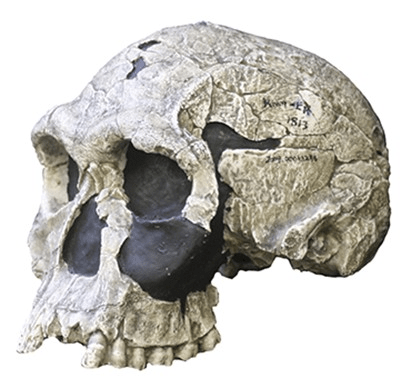
Homo erectus Looks
Homo erectus picked up from Homo habilis and nearly survived to modern times. The last of the Homo erectus died out about 110,000 years ago, with some of the latest populations thought to be in areas like Java in Southeast Asia. When I picture the evolutionary looks of Homo erectus from early, about 1.9 million years ago, I see them looking similar to later Homo habilis and evolving from there. Over the next nearly 2 million years, I picture a species undergoing significant changes: they developed a more robust physique, their brain size increased significantly, averaging about 900 cubic centimeters, and their stature grew taller, approaching modern human heights. These physical developments were complemented by major behavioral advancements such as the use of fire, more complex tool-making, and possibly even the beginnings of spoken language. Their facial structure became less pronounced with smaller jaws and teeth, and a flatter face, reflecting their adaptation to a diverse diet and changing environments. This is also likely when we developed less hair. These changes illustrate a clear progression from their more primitive ancestors, marking Homo erectus as a key figure in the human evolutionary timeline.

Museums frequently show Homo erectus with no hair to show their features. The reality is we’re not sure if less hair emerged with or earlier. The current thought is that less hair evolved when ancient humans ran around chasing large prey. Less hair was an advantage in the emerging hot climate of Africa.
With Homo erectus surviving until at least 50,000 years ago, I can imagine elaborate camps over the many millennia.


Homo heidelbergensis Looks
While there were many ancient human and more primitive hominid species on their own path, Homo heidelbergensis stands out in our history. They emerged about 770,000 years ago. When I think of their journey, which lasted until about 200,000 years ago, I picture a species that served as a crucial bridge between earlier hominins like Homo erectus and later humans including neanderthals and sapiens. Homo heidelbergensis were likely more robust than their predecessors, with an average brain size nearly the same size as modern humans, suggesting significant cognitive evolution. They had a larger and more rounded skull, a prominent brow ridge, and a wider face. While I picture them with a more modern looking nose, I have trouble getting AI to generate it. The data used by AI is heavily weighted to a chimpanzee-like nose. This period of their existence saw advanced tool-making techniques, including the production of wooden spears and the probable use of fire for cooking and warmth, indicating complex social structures and hunting strategies. They adapted to various climates across Africa, Europe, and possibly Asia, showcasing a remarkable versatility in their ability to thrive across different environments.

Homo Heidelbergensis were much smarter than Homo erectus and I can picture them setting up camp, a kind of semi-permanent or long-term campsite.

Neanderthal and Denisovan Looks
Early Neanderthals emerged around 440,000 years ago, primarily in Europe and parts of Western Asia. When I picture the evolutionary journey of early Neanderthals, I envision a robust and resilient species, well-adapted to the cold climates of the Ice Age. They had strong, muscular bodies, large noses for humidifying and warming cold air, and a brain size comparable to or even larger than modern humans, averaging around 1600 cubic centimeters. Their culture was complex, evident from their sophisticated tool use, which included the Mousterian tool technology, and their practices such as burial of the dead, possibly indicating early forms of ritualistic or symbolic behavior.
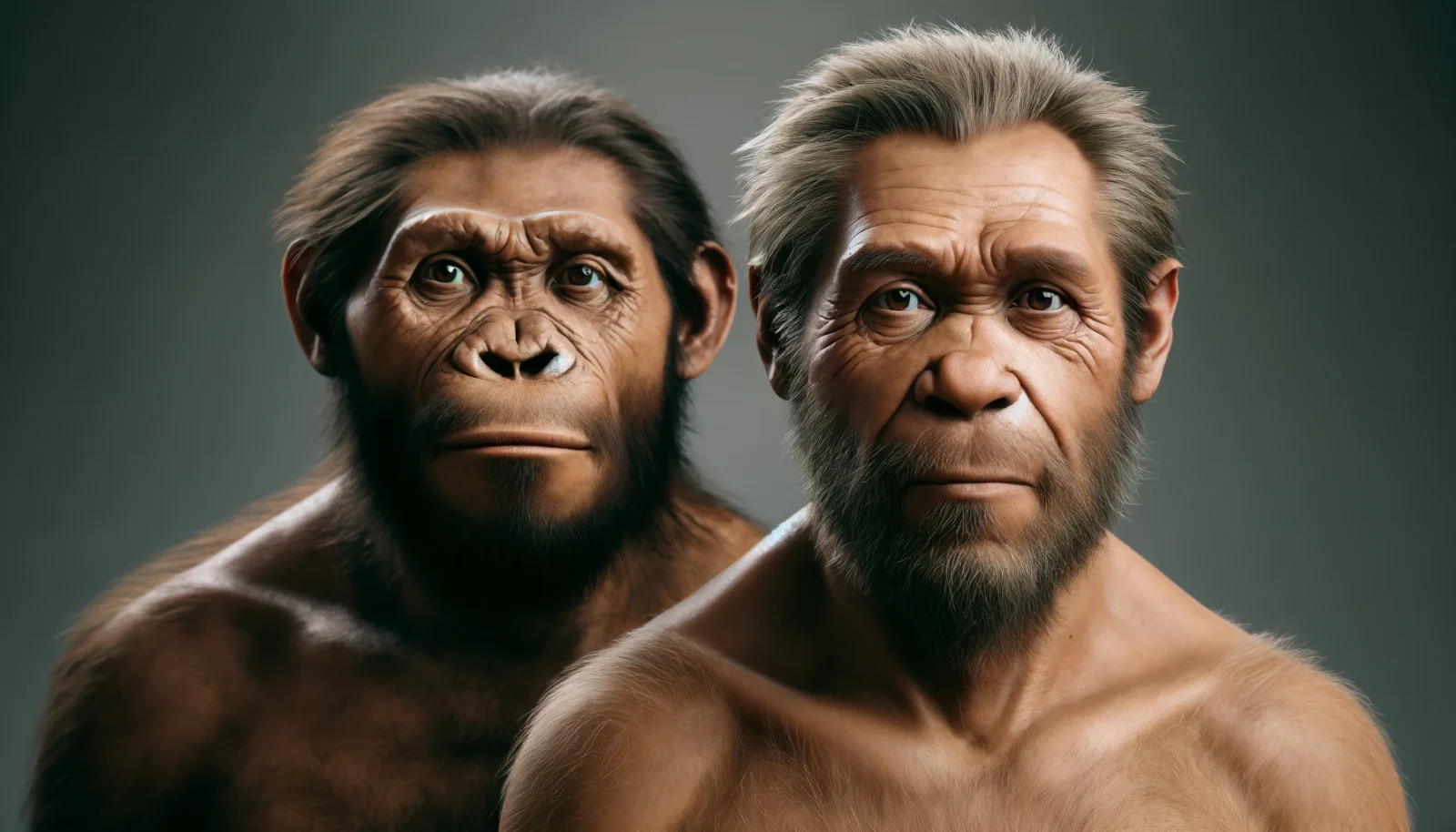
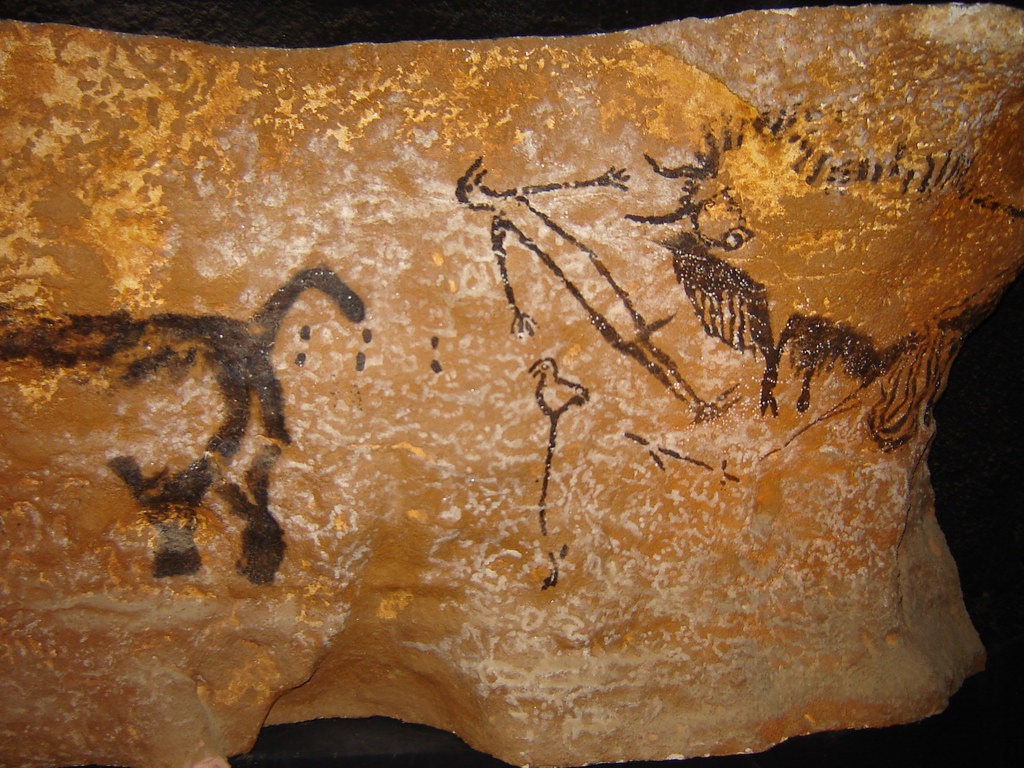
Denisovans, although less is known about them due to the scarcity of their fossils, are believed to have appeared around the same time as Neanderthals or slightly later, inhabiting parts of East Asia. The limited fossil record, including a few teeth and a finger bone, suggests that Denisovans were also robust like Neanderthals, possibly sharing common features such as a large dental structure. Genetic studies indicate they had a level of adaptation to high-altitude environments, such as the Tibetan Plateau, suggesting they were capable of thriving in diverse and challenging habitats. The discovery of sophisticated artifacts and jewelry in Denisovan layers, including a bracelet of stunning craftsmanship, points to their high level of cultural and technological development.

The last known of the denisovan is in Siberia, circa 40,000 years ago.

Late-Stage Neanderthals
For the last of the Neanderthals, I picture them almost within the range of modern humans, existing up until about 40,000 years ago. These late-stage Neanderthals showed sophisticated behaviors and technologies comparable to early Homo sapiens. They crafted complex tools, such as the Levallois technique, which allowed for the production of more efficient and versatile flint tools. Their physical appearance remained robust with strong, heavy builds, large noses adapted to cold climates, and a slightly smaller average brain size compared to modern humans, but still within a large and complex range. They adorned themselves with body ornaments, used pigments for symbolic purposes, and evidence suggests they engaged in ritualistic practices including the burial of their dead with grave goods. This period highlights a significant overlap with modern humans, both in terms of coexistence in geographical space and in the sharing and exchanging of technologies and possibly cultural practices.
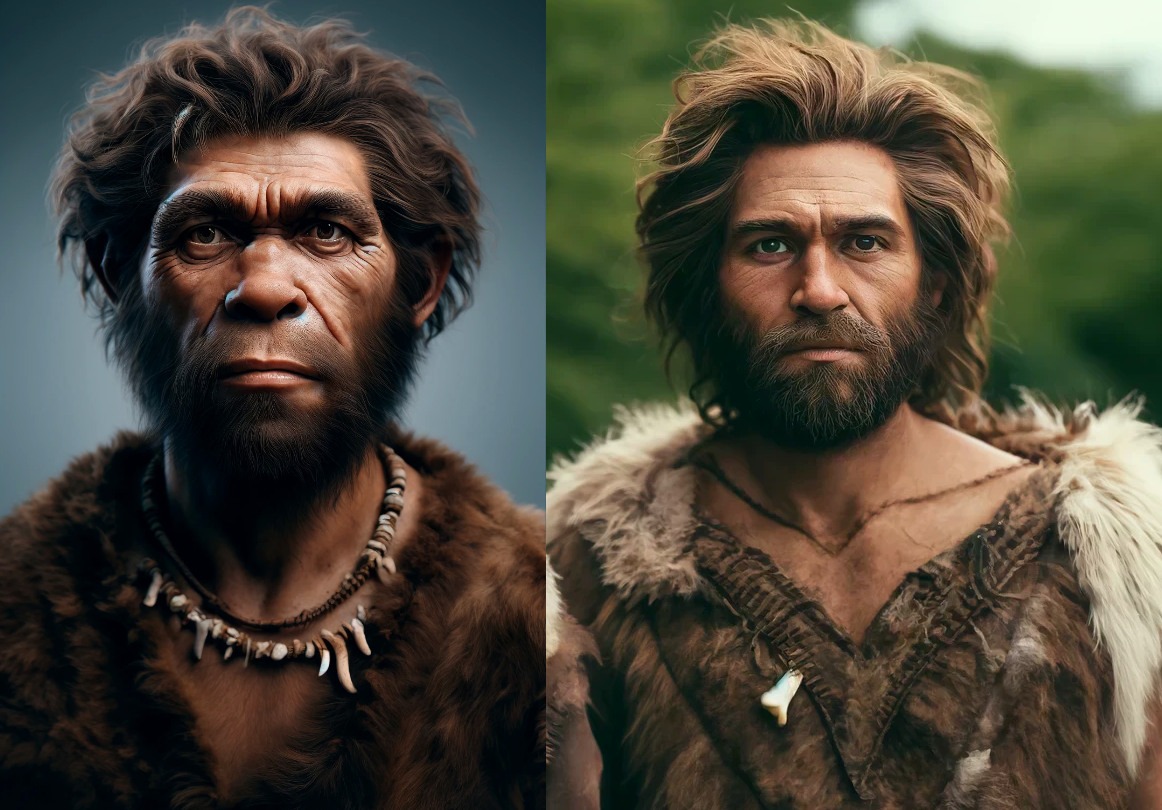
When examining the fossil record and reconstructing the appearance of early human species, it’s essential to be mindful of our inherent anthropomorphic bias. This bias leads us to assume that ancient humans looked fundamentally different from us, reinforcing a false dichotomy between “primitive” and “modern” humans.
However, a closer examination of the evidence reveals that early human species, such as Homo heidelbergensis, neanderthals, denisovans, and sapiens, likely shared many physical similarities with modern humans. The fossil record shows a gradual evolution of physical characteristics, with many overlaps and similarities between species.
Moreover, focusing on averages and general trends can perpetuate anthropomorphism, obscuring the individual variability that exists within each species. Just as modern human populations exhibit a wide range of physical characteristics, ancient humans likely did too. While physical differences among ancient humans for sure existed, we should shift our focus from comparing averages to comparing ranges.
Contemplating Cognitive Horizons
This article has explored the gradual evolution of cognitive capabilities in humans, challenging the traditional view of the Cognitive Revolution as a sudden, defining leap in human history. We have seen that the development of Transcendental Intelligence (TI)—encompassing abstract thinking, artistic creation, and symbolic communication—did not emerge abruptly but evolved through a continuous and interlinked process across various ancient humans.
As we continue to explore our past, let us reconsider the narrative of human cognitive evolution. Let us challenge the simplicity of sudden leaps and embrace the complexity of gradual growth. By doing so, we not only honor the true nature of our ancestors’ journey but also gain deeper insights into our own cognitive processes and capabilities.
— map / TST —
Want more?
- March to Consciousness: The Soul Timeline: detailed visual exploration of the evolution of our modern brains
- A New Look at Ancient Hominin Numbers: A Speculative Journey, a visual and descriptive tour of hominin populations over the last 700,000 years.
References and Further Reading
For those interested in exploring the themes discussed in this article further, the following books and articles provide excellent resources:
- Harari, Yuval Noah. Sapiens: A Brief History of Humankind. This book provides a compelling narrative of human history, including the concept of the Cognitive Revolution, which serves as a starting point for deeper exploration.
- Klein, Richard. The Human Career: Human Biological and Cultural Origins. This work discusses the archaeological evidence of human evolution, including critical insights into cognitive developments.
- Tattersall, Ian. The World from Beginnings to 4000 BCE. This book offers insights into the gradual developments in human cognition from an anthropological perspective.
- D’Errico, Francesco, et al. “New evidence of early symbolic behavior in Homo sapiens from Blombos Cave, South Africa.” Nature (2005). This article provides details on the Blombos Cave findings that are crucial for understanding early human cognition.




